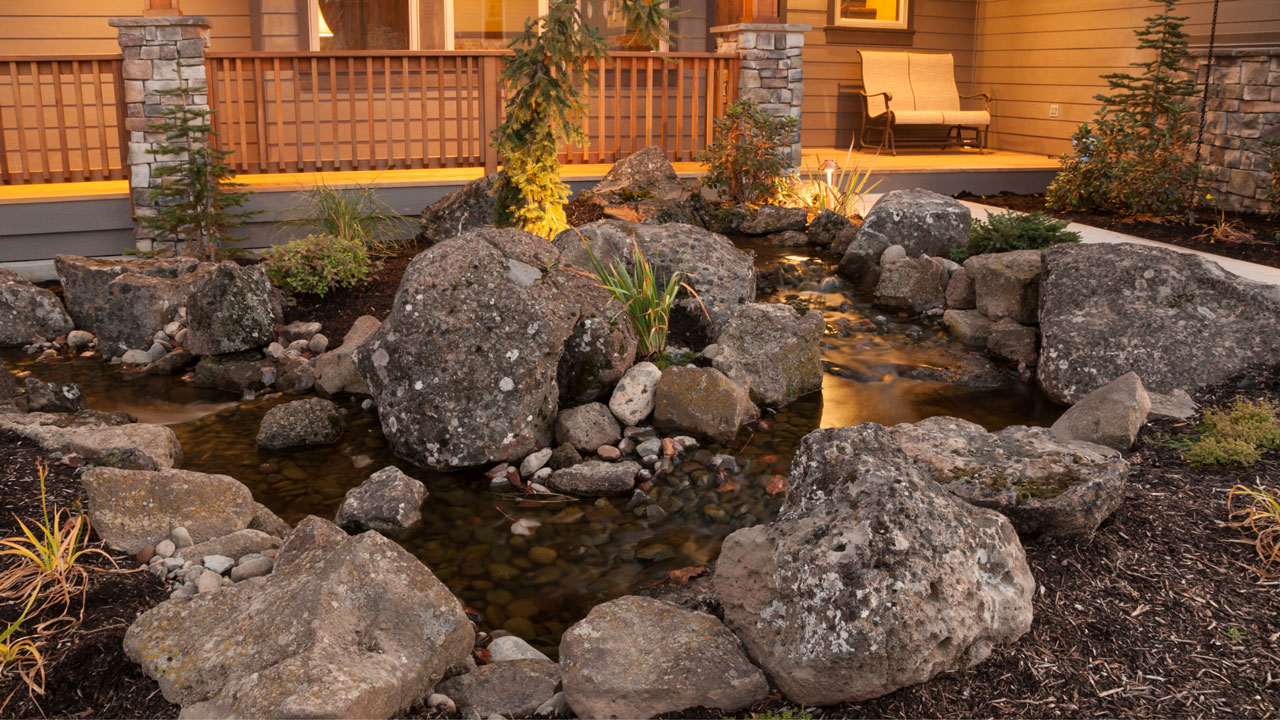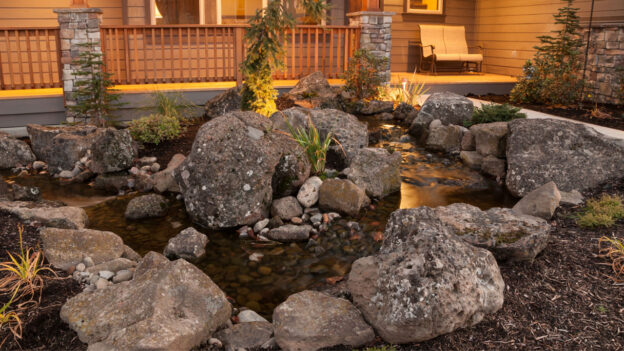 Birdwatching is a beloved hobby for many nature enthusiasts, offering an opportunity to observe the beauty and behavior of our feathered friends up close. If you’re looking to attract more birds to your backyard pond, creating a welcoming habitat with a backyard pond can be an excellent strategy.
Birdwatching is a beloved hobby for many nature enthusiasts, offering an opportunity to observe the beauty and behavior of our feathered friends up close. If you’re looking to attract more birds to your backyard pond, creating a welcoming habitat with a backyard pond can be an excellent strategy.
In this comprehensive guide, we’ll explore everything you need to know about attracting birds with backyard ponds, from selecting the right location to choosing bird-friendly plants and providing essential water sources.
Role of Birds in Your Backyard
Birds play a vital role in maintaining the balance and health of ecosystems, including your backyard. From pollination and pest control to seed dispersal and adding beauty to your surroundings, here’s a look at the important roles birds fulfill in your outdoor space:
- Pollination: A variety of bird species, such as hummingbirds and certain songbirds, play a crucial role in pollinating flowers while foraging for nectar. This helps facilitate the reproduction of flowering plants in your backyard, promoting biodiversity and a healthy ecosystem.
- Pest Control: Birds are natural predators of insects and other pests, helping to keep populations in check without the need for harmful pesticides. Insect-eating birds like warblers and swallows can help control populations of mosquitoes, flies, and other garden pests, reducing the need for chemical interventions.
- Seed Dispersal: Birds aid in seed dispersal by consuming fruits and berries and then dispersing the seeds through their droppings. This process helps plants colonize new areas and maintain genetic diversity, contributing to the regeneration and expansion of plant populations in your backyard.
- Weed Control: Some bird species, such as ground-feeding sparrows and finches, help control weed populations by foraging for seeds and seedlings. Their feeding behavior can help reduce competition from invasive plant species and promote the growth of desirable vegetation in your yard.
- Nutrient Cycling: Bird droppings contain valuable nutrients that can enrich the soil and promote plant growth. As birds forage and roost in your backyard, they contribute to the nutrient-cycling process, helping to maintain soil fertility and ecosystem health.
How to Attract Birds In Your Backyard Space
By creating a welcoming habitat with features like bird-friendly plants, water sources, and nesting sites, you can attract a diverse array of bird species and reap the benefits they provide.
1. Choosing the Right Location
Selecting the optimal location for your backyard pond is crucial to attracting birds. Consider the following factors:
- Sunlight: Birds prefer sunny areas, so place your pond in a spot that receives ample sunlight throughout the day.
- Safety: Position the pond away from potential hazards like predators, loud noises, and high foot traffic areas to ensure birds feel safe and secure.
- Visibility: Birds are more likely to visit a pond that is easily visible from trees or shrubs where they perch. Keep the pond within their line of sight for maximum attraction.
2. Designing a Bird-Friendly Pond
Once you’ve chosen the location, it’s time to design a fountain or waterfall feature that appeals to birds. Consider the following elements:
- Shallow Areas: Birds prefer shallow water for bathing and drinking, so include sloping edges or shallow shelves in your pond design.
- Water Depth: Maintain a consistent water depth of 1-3 inches to accommodate birds of all sizes, from small songbirds to larger species like robins and thrushes.
- Safety Features: Incorporate rocks, branches, or floating platforms to provide birds with safe perching and landing spots near the water’s edge.
3. Selecting Bird-Friendly Plants
Choosing the right plants for your backyard pond can significantly enhance its attractiveness to birds. Opt for native species that provide food, shelter, and nesting sites, such as:
- Native Grasses: Grasses like switchgrass and little bluestem provide seeds and nesting material for birds.
- Water Lilies: Floating plants like water lilies offer shade and protection for aquatic life while attracting insects that birds feed on.
- Marginal Plants: Include marginal plants like cattails and rushes along the pond’s edge to create habitat diversity and cover for nesting birds.
4. Providing Essential Water Sources
In addition to your backyard pond, offering supplementary water sources can further entice birds to visit your yard. Consider adding:
- Bird Baths: Install a shallow bird bath with a gently sloping basin for easy access and provide fresh water regularly.
- Misters and Sprinklers: Birds are attracted to the sound and movement of running water, so consider adding misters or sprinklers near your pond to create a refreshing oasis.
5. Maintenance and Care
Regular maintenance is essential to keep your backyard pond inviting to birds. Perform the following tasks:
- Cleaning: Remove debris, leaves, and algae from the pond regularly to maintain water quality and clarity.
- Refilling: Keep the water level consistent by replenishing evaporated water and topping off the pond as needed.
- Monitoring: Keep an eye out for signs of wildlife activity, such as bird visits and nesting behavior, and adjust your pond’s design and maintenance accordingly.
6. Adding Bird Feeders and Houses
Supplement your backyard pond with bird feeders and houses to provide additional food and shelter for your feathered visitors. Here’s what to consider:
- Bird Feeders: Choose a variety of feeder types, such as tube, platform, or suet feeders, to attract different bird species. Fill them with a diverse selection of seeds, nuts, and suet cakes to accommodate various dietary preferences.
- Bird Houses: Install bird houses or nesting boxes around your pond to offer shelter and nesting sites for cavity-nesting birds like chickadees, wrens, and bluebirds. Make sure the houses are placed in suitable locations and are cleaned out regularly to maintain bird health and safety.
7. Creating a Bird-Friendly Environment
Enhance the overall bird-friendliness of your backyard by incorporating the following elements:
- Natural Habitat: Preserve and create natural habitat areas with native plants, shrubs, and wildflowers to attract a wide range of bird species and provide essential food and shelter resources.
- Minimize Chemical Use: Avoid using pesticides and herbicides in your yard, as these chemicals can harm birds and other wildlife. Instead, opt for organic gardening practices to maintain a healthy and bird-friendly environment.
Revitalize Your Outdoor Space with Our Pond Services!
Ready to transform your backyard into a tranquil oasis? Discover our expert pond services and let us help you create the perfect water feature for attracting birds and enhancing your outdoor experience. Contact us today to schedule a consultation and bring your vision to life!
